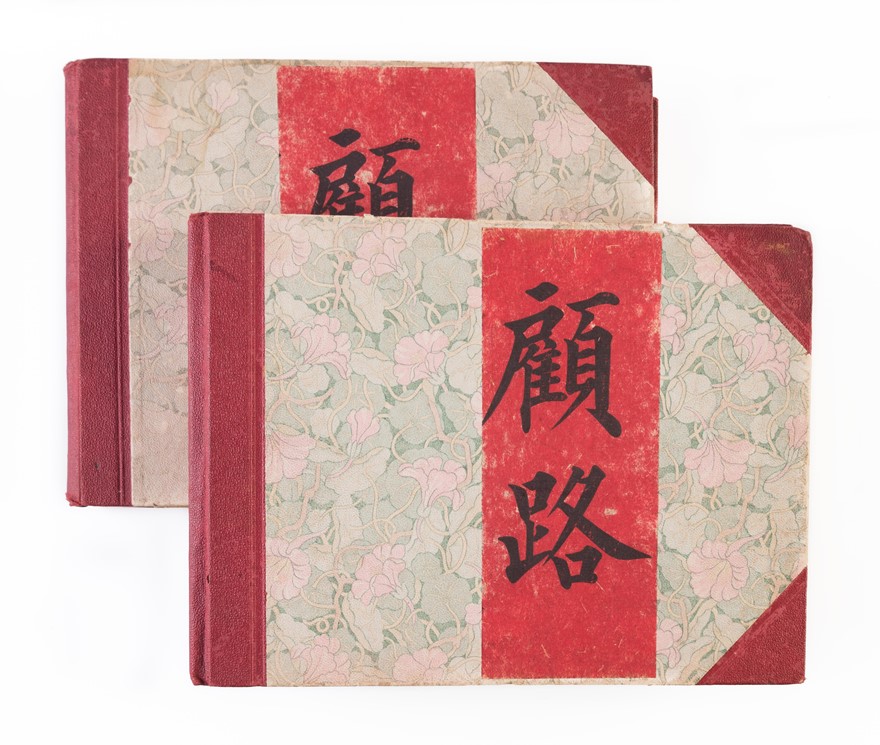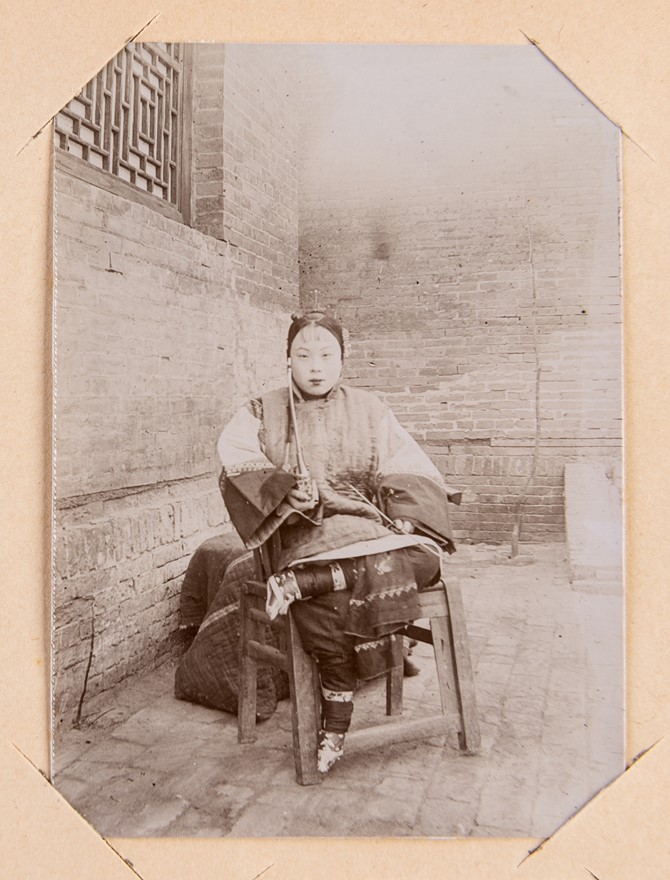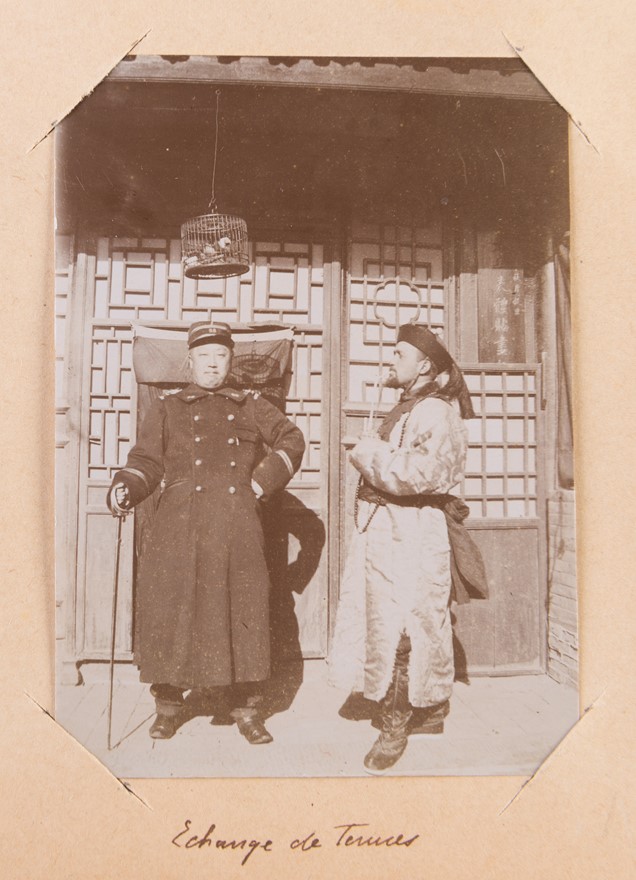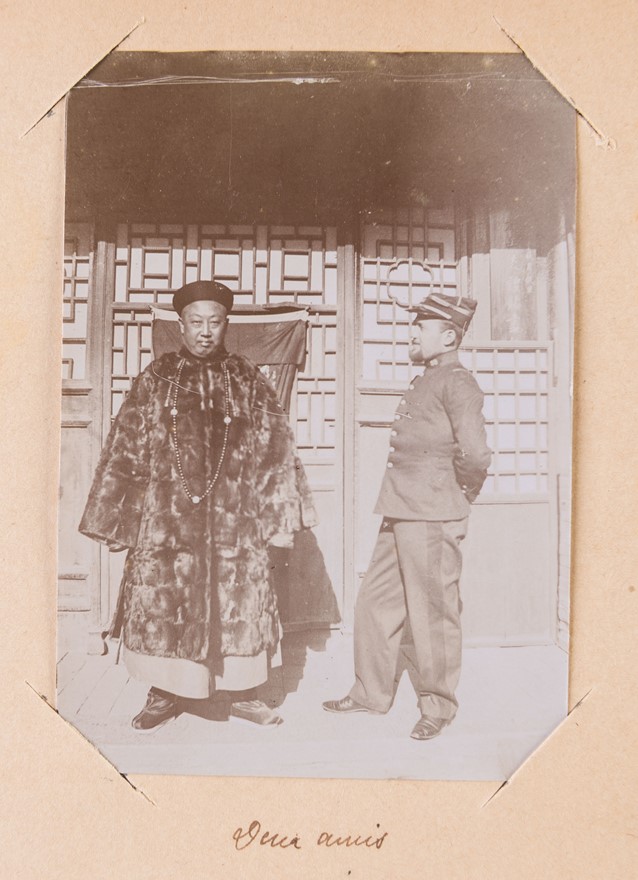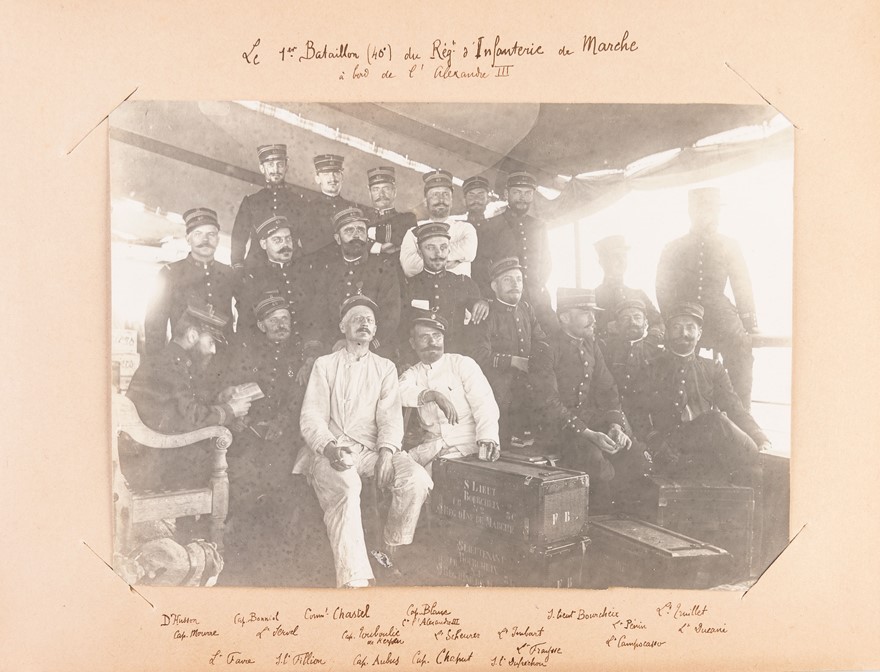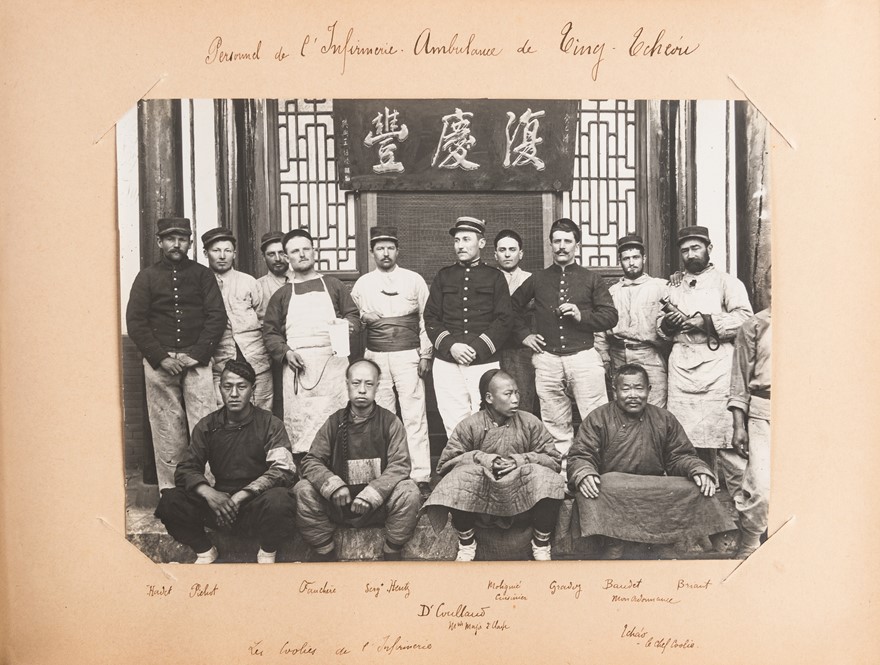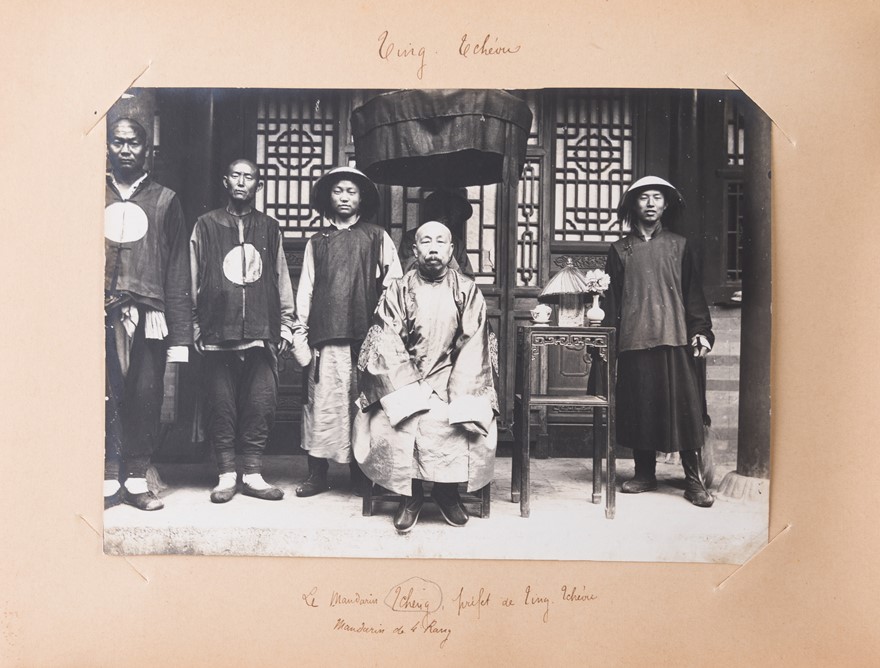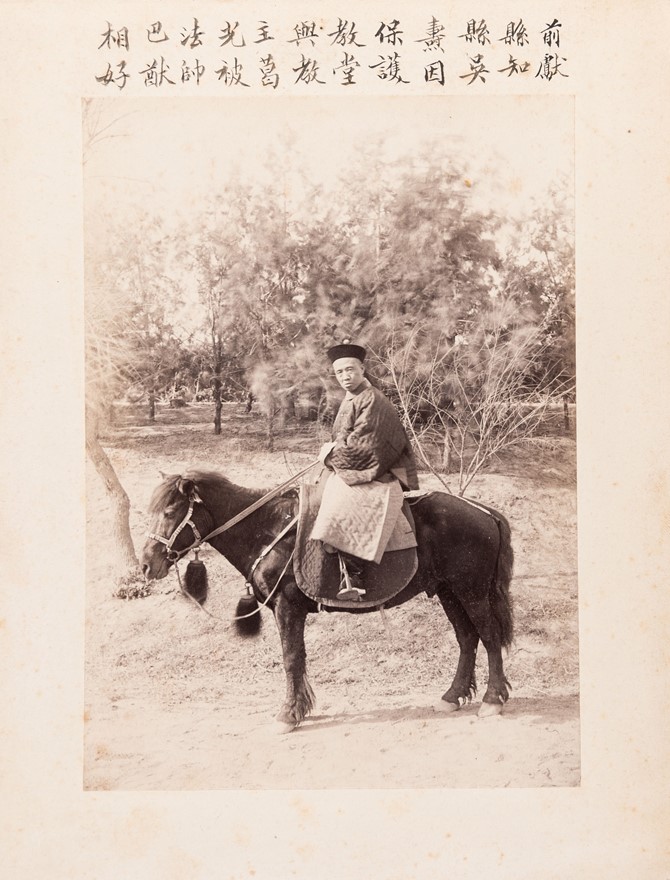"Kulu" (in Chinese, i.e. Coullaud), a French Doctor during the Boxer Rebellion.
COULLAUD Henry (1901.)
£8500.00
Please contact us in advance if you would like to view this book at our Curzon Street shop.
Two albums containing 50, 127 original photographs respectively, mostly silver gelatine prints, various sizes (between 17x12cm and 6x8cm). Paris/Tientsin, 14th August 1900-September 18th,
The photos were taken between 1900 and 1901 by the French military doctor Henry Coullaud (1872-1954). As young military doctor Coullaud volunteered to join the Campaign in China. He left on 19 August 1900 on board the Alexandre III as part of the 1st Batallion of an Infantry Regiment. The beginning of the first album consists of a photo of the crew of the ship, followed by images of the stops made along the journey: Port-Said, Djibouti (with a nice shot of the Cafe du Louvre), and Singapore before reaching Northern China and the harbour at Tong-Kou (Tanggu port) forty-two days after leaving Marseilles. The French regiment then proceeded to Pao-Ting-Foo (Baoding), before settling in Ting-Tcheou (Dingzhou). Later they moved on to Tcheng-ting-fou (Zhengding fu), and Ta-kou (Dagu). All of the images in Album 1 contain larger prints and most paint a positive picture of French-Chinese relations: They cover official engagements, military parades, French celebrations on July 14th, and staged portraits of high-ranking individuals, both of Chinese dignitaries and French officers. Coullaud clearly used his medical expertise to help Chinese patients and there is an extraordinary image of him inspecting a Chinese woman lying on a table outside her home. Coullauds regiment does not seem to have been directly involved in the fight against the Boxers but one photo shows heads of Boxer rebels displayed in cages in public.
The second album shows daily life in China, carefully grouped around certain subjects: Starting off with town-views of Tianjin and Peking the images show the contrast between Western and Chinese architecture, as well as unusual shots of village notables, police officers, as well as soldiers. This is followed by a series of 8 images of Chinese modes of transport, followed by four of entertainers, and five of young women. A further series show Chinese shipping along the canal (8), temples (8), as well scenes from a French theatre performance (4). A further group of 30 show agricultural methods in China, followed by 11 portraits and groups featuring Chinese costumes, including one where Coullaud exchanges his uniform with that of a Chinese official. Other groups show a public execution, funeral rites, etc.
The Chinese calligraphy on the red label on the cover is a traditional printed visiting card of the doctor’s surname. The inscription in black letters on the crimson background bear his name in its phonetic equivalent using two characters, Ku and Lu. Apparently they were given to Coullaud in gratitude by the Wang family for successfully operating on their patriarch. (see D. Coullaud: 'La Main merveilleuse qui rend le printemps', 1992). Also included is a separate studio portrait of Baudet, Dr. Coullaud’s orderly.
Stock Code: 228618
